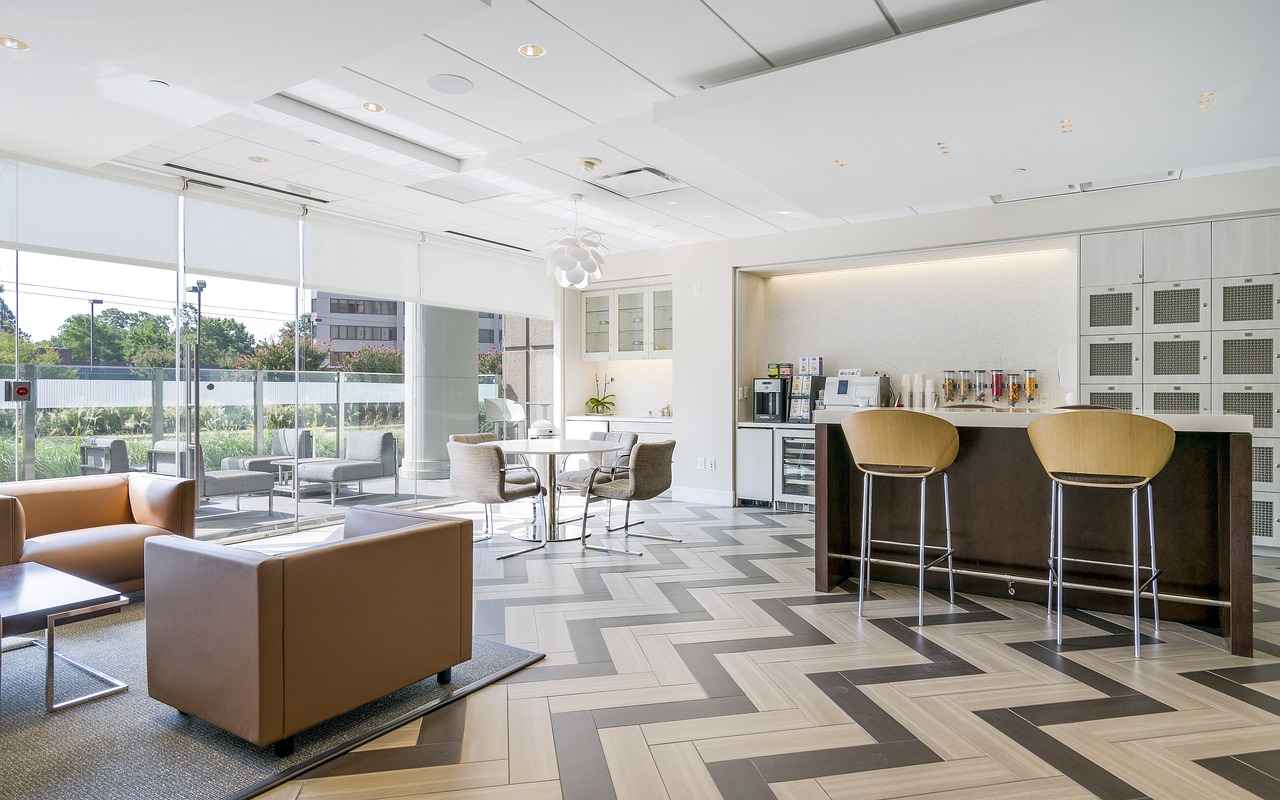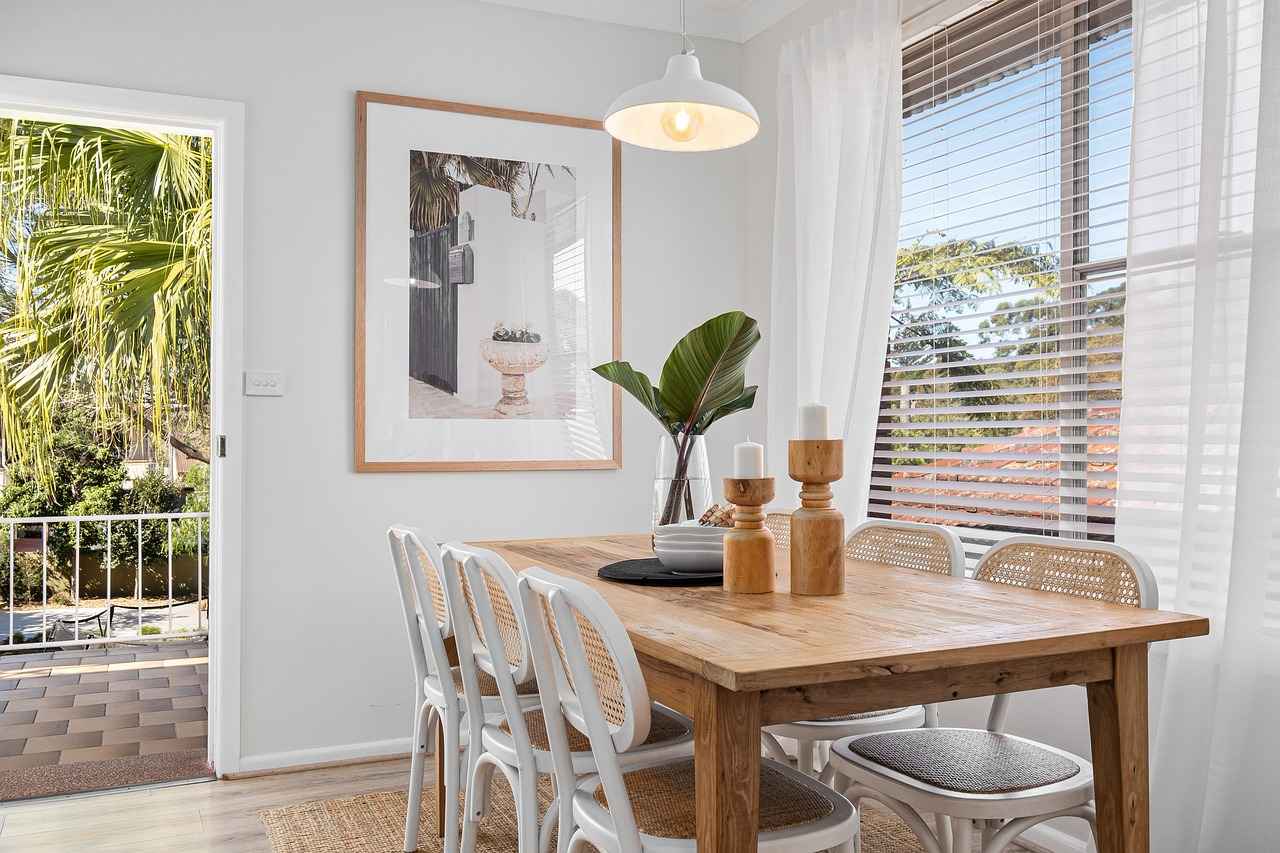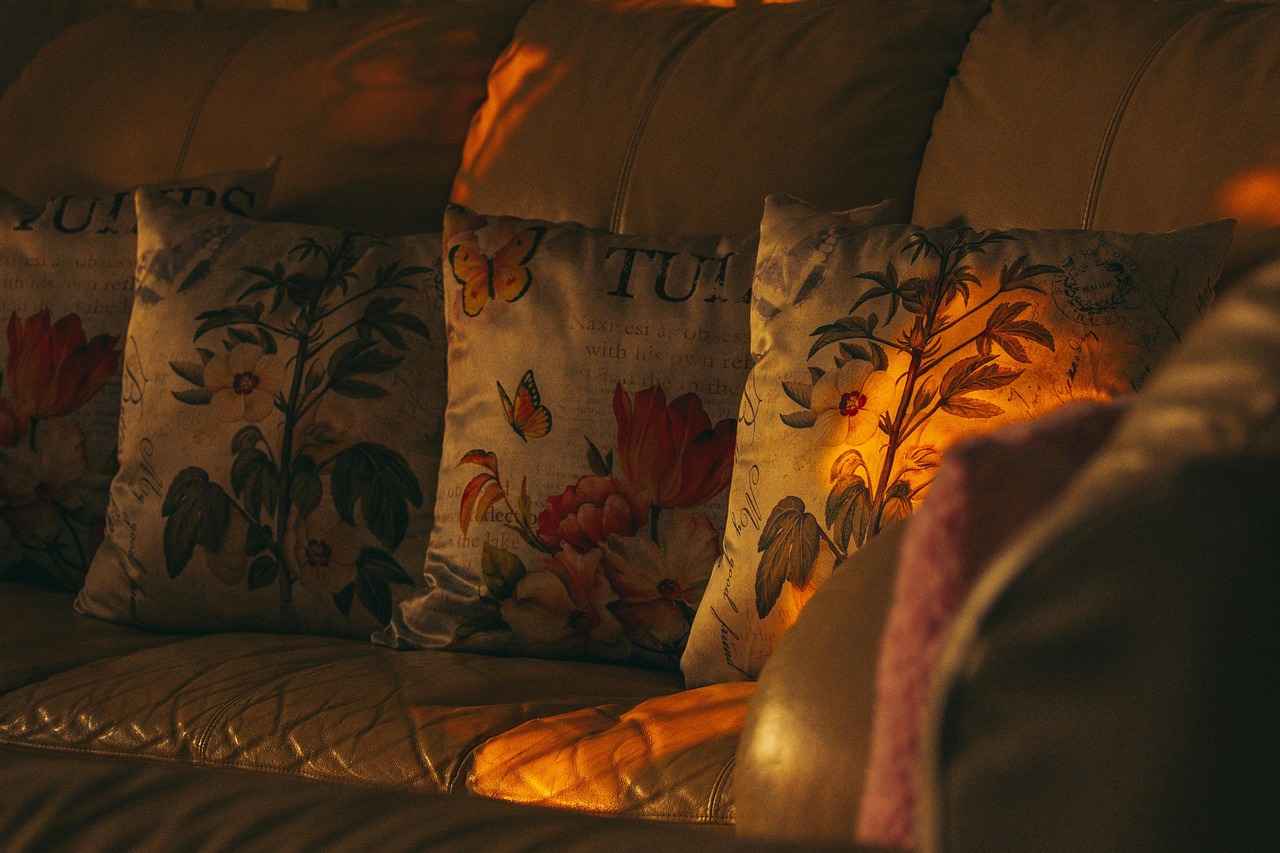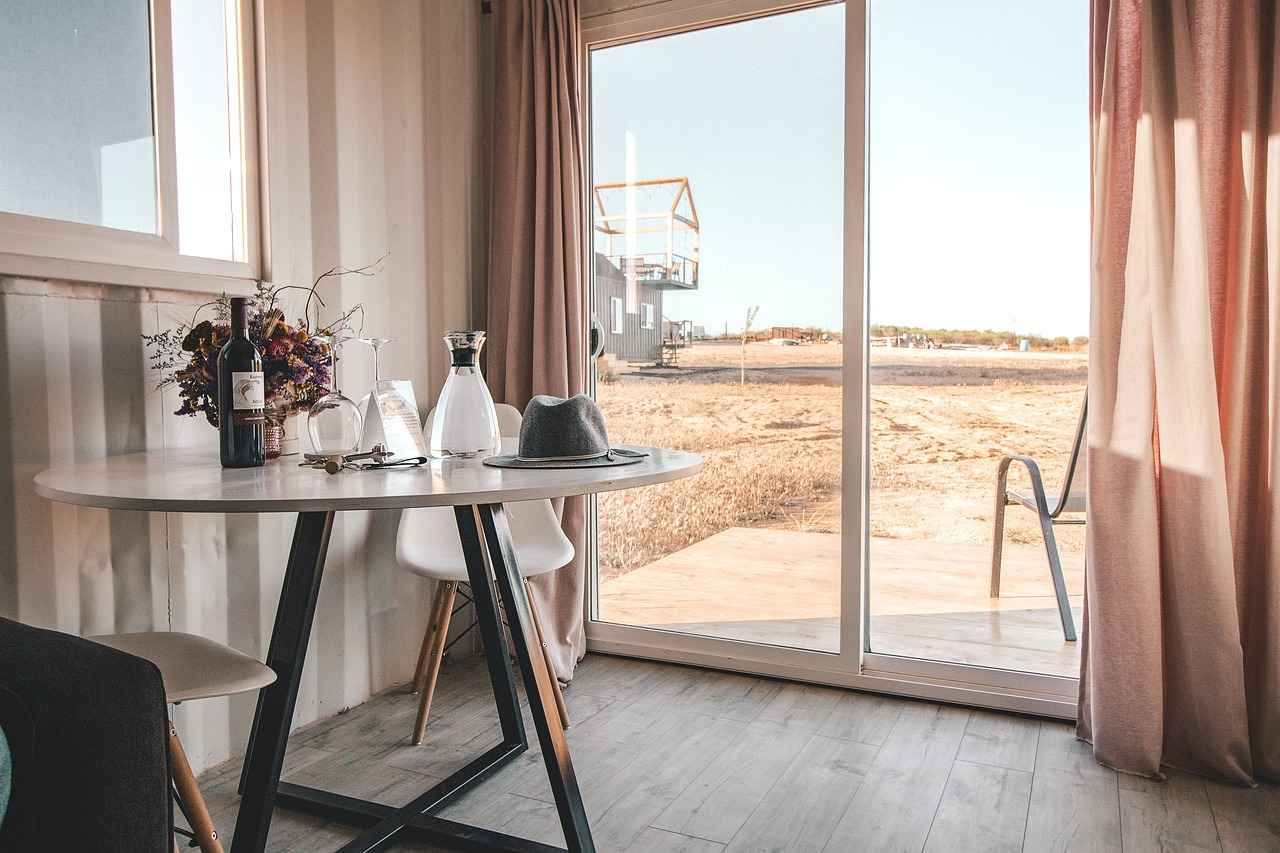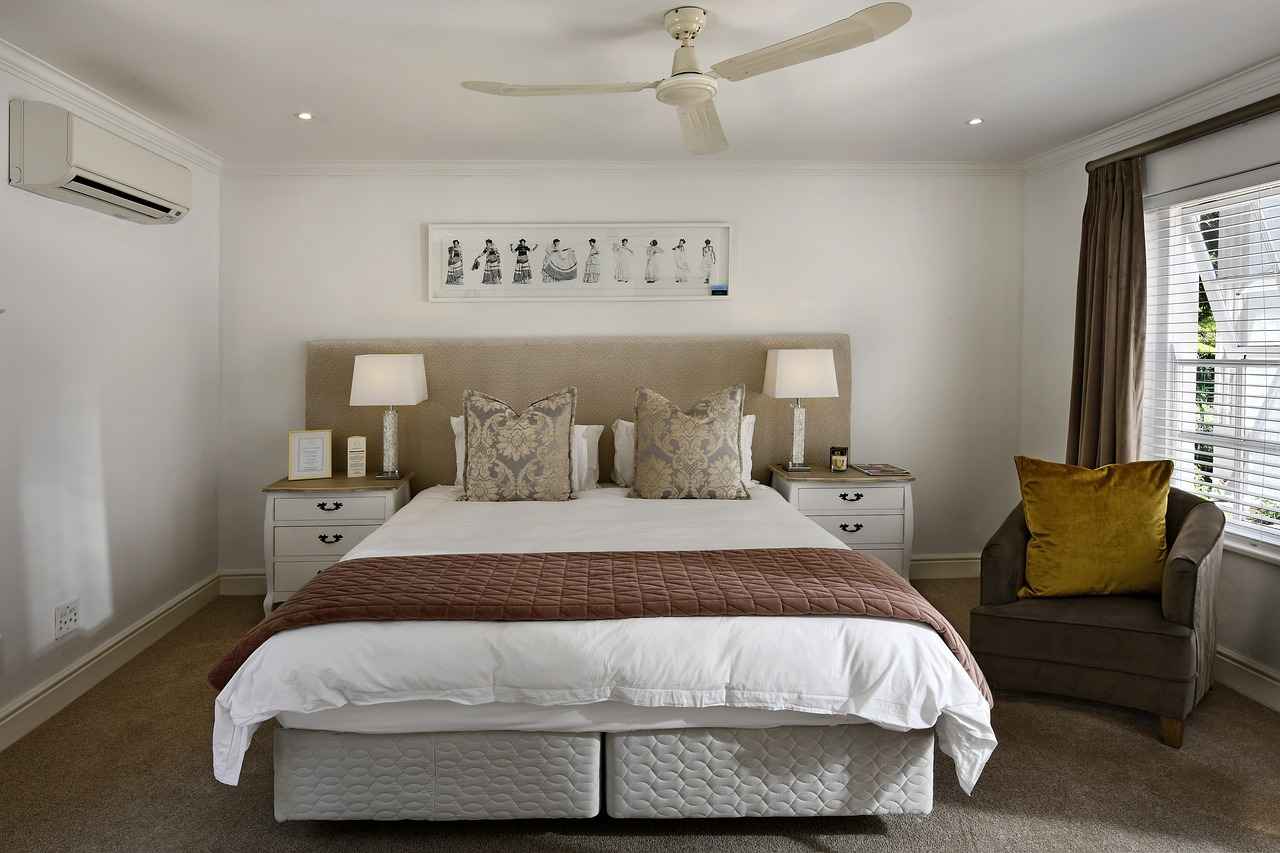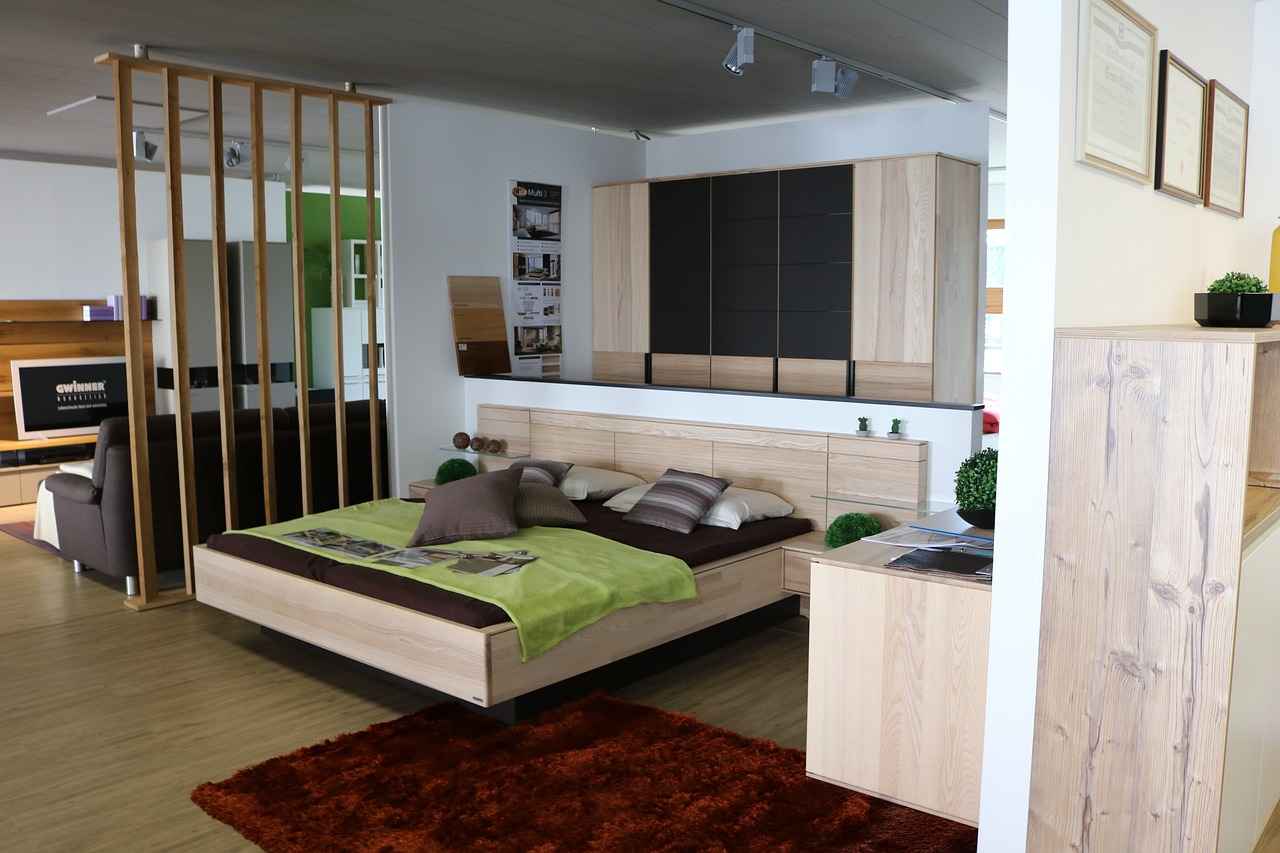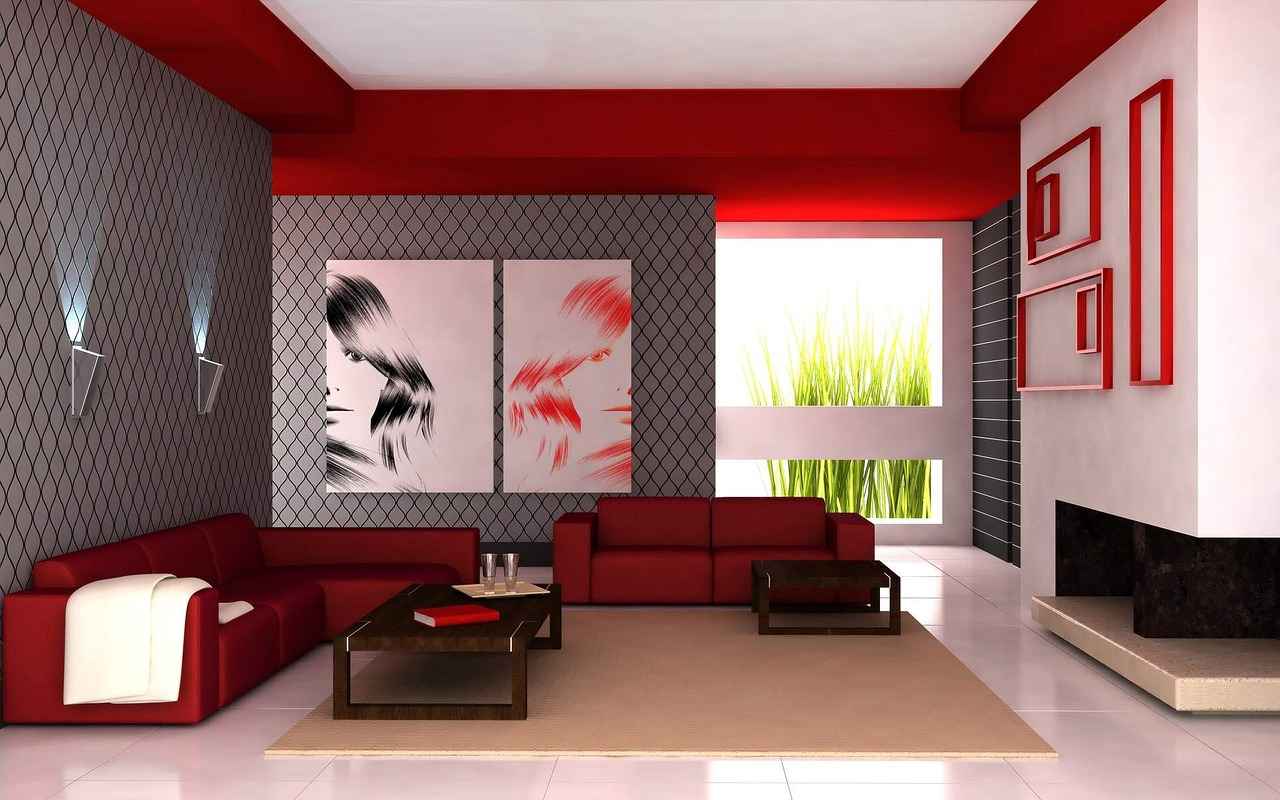This article delves into the practical aspects of room divider curtains and folding screens, highlighting their features, benefits, and ideal use cases. By understanding these options, you can make an informed decision tailored to your space.
What Are Room Divider Curtains?
Room divider curtains are flexible fabric panels that can be suspended from a rod to create distinct areas within a room. They are not only functional but also add a decorative touch, allowing for a seamless blend of style and utility. These curtains come in various materials, colors, and patterns, making them suitable for any interior design theme.
What Are Folding Screens?
On the other hand, folding screens are typically constructed from wood, metal, or plastic and consist of multiple hinged panels. They are often used as decorative pieces, capable of transforming a room’s ambiance while providing a physical barrier. Their portability makes them a versatile choice for any living space.
Benefits of Room Divider Curtains
- Ease of Installation: Curtains can be hung quickly and easily, requiring minimal tools.
- Affordability: Generally, room divider curtains are more budget-friendly compared to folding screens.
- Light Control: They can be adjusted to allow varying degrees of light into a space, enhancing comfort.
Benefits of Folding Screens
- Portability: Folding screens can be moved with ease, allowing for flexible room layouts.
- Aesthetic Appeal: They often serve as focal points in a room, adding character and charm.
- Non-Permanent Solution: Ideal for renters or those who frequently change their interior setups.
How to Choose Between Curtains and Screens?
When deciding between room divider curtains and folding screens, consider factors such as your desired level of privacy, aesthetic preferences, and the intended functionality of your space. For instance, if you prioritize versatility and style, curtains might be the better option. Conversely, if you need a quick and portable solution, folding screens could be the way to go.
Design Flexibility: Curtains vs. Screens
Both options offer a range of designs, but curtains provide greater customization. With a plethora of fabrics, colors, and patterns available, you can tailor your curtains to fit your unique style. Folding screens, while available in various designs, typically have a more limited selection compared to curtains.
Installation and Maintenance: Which Is Easier?
Room divider curtains usually require a simple rod installation, which can be done quickly. They are also machine washable, making maintenance straightforward. In contrast, folding screens may require occasional dusting and careful handling to avoid damage, especially if they are made from delicate materials.
Cost Comparison: Curtains vs. Folding Screens
In terms of budget, room divider curtains are generally less expensive than folding screens. However, prices can vary widely based on the quality of materials and the complexity of the design. It’s essential to weigh your options against your budget and needs.
Space Considerations: Which Works Best?
The size and layout of your space can greatly influence your choice. Room divider curtains are ideal for larger areas that require flexible separation, while folding screens are perfect for smaller spaces where a temporary solution is needed.
Privacy Levels: Curtains vs. Screens
Privacy is a crucial factor when selecting a room divider. Curtains can provide varying degrees of privacy depending on the fabric used, while folding screens can create immediate visual barriers, making them effective for quick separation.
Durability and Longevity: Which Lasts Longer?
When it comes to durability, folding screens typically offer greater longevity due to their sturdier materials. In contrast, curtains may wear out more quickly depending on the fabric type and frequency of use.
Ultimately, your choice between room divider curtains and folding screens will depend on your specific needs, preferences, and the context of your space. By evaluating the factors discussed, you can make a well-informed decision that enhances your living environment.

What Are Room Divider Curtains?
Room divider curtains are an innovative and practical solution for homeowners and renters alike who wish to maximize their living space. These versatile fabric panels can be easily hung from a ceiling or mounted on a wall, allowing you to create separate areas within a single room. Whether you want to establish a cozy reading nook, a private workspace, or simply divide a large living area, room divider curtains offer a flexible and stylish option.
One of the most appealing aspects of room divider curtains is their design flexibility. Available in a myriad of colors, patterns, and fabrics, these curtains can complement any interior decor style, from modern to traditional. Homeowners can choose sheer fabrics for a light and airy feel or heavier materials for more privacy and insulation. This variety allows for greater customization, enabling you to express your personal style while enhancing the functionality of your space.
Room divider curtains are also affordable compared to other room division options, such as folding screens or permanent walls. Installation is typically straightforward, requiring just a curtain rod or track system, which can often be done without professional assistance. This ease of setup makes them a popular choice for those looking to make quick changes in their home without a significant investment.
In addition to their aesthetic appeal, these curtains serve practical purposes. They can effectively control light and privacy, allowing you to adjust the ambiance of your room according to your needs. For example, you can draw the curtains to block out sunlight during the day or create a private space for work or relaxation. This adaptability is particularly beneficial in open-concept homes where one large area serves multiple functions.
Moreover, room divider curtains can also provide sound dampening benefits. The fabric can help absorb sound, making it easier to maintain a peaceful environment, especially in shared living spaces. This feature is particularly advantageous in apartments or homes where noise can be an issue.
When considering room divider curtains, it’s essential to think about the maintenance involved. Most curtains can be easily washed or dry cleaned, making them a low-maintenance option for busy households. This is in contrast to folding screens, which may require more careful handling and occasional dusting.
Ultimately, room divider curtains are a practical and stylish solution for creating defined spaces within a room. Their affordability, versatility, and ease of installation make them an attractive option for anyone looking to enhance their living environment. By choosing the right fabric and design, you can not only improve the functionality of your space but also elevate its overall aesthetic appeal.
In conclusion, if you are looking to divide a room effectively without the commitment of permanent structures, room divider curtains are an excellent choice. They offer a unique blend of style and practicality, making them suitable for various living situations.
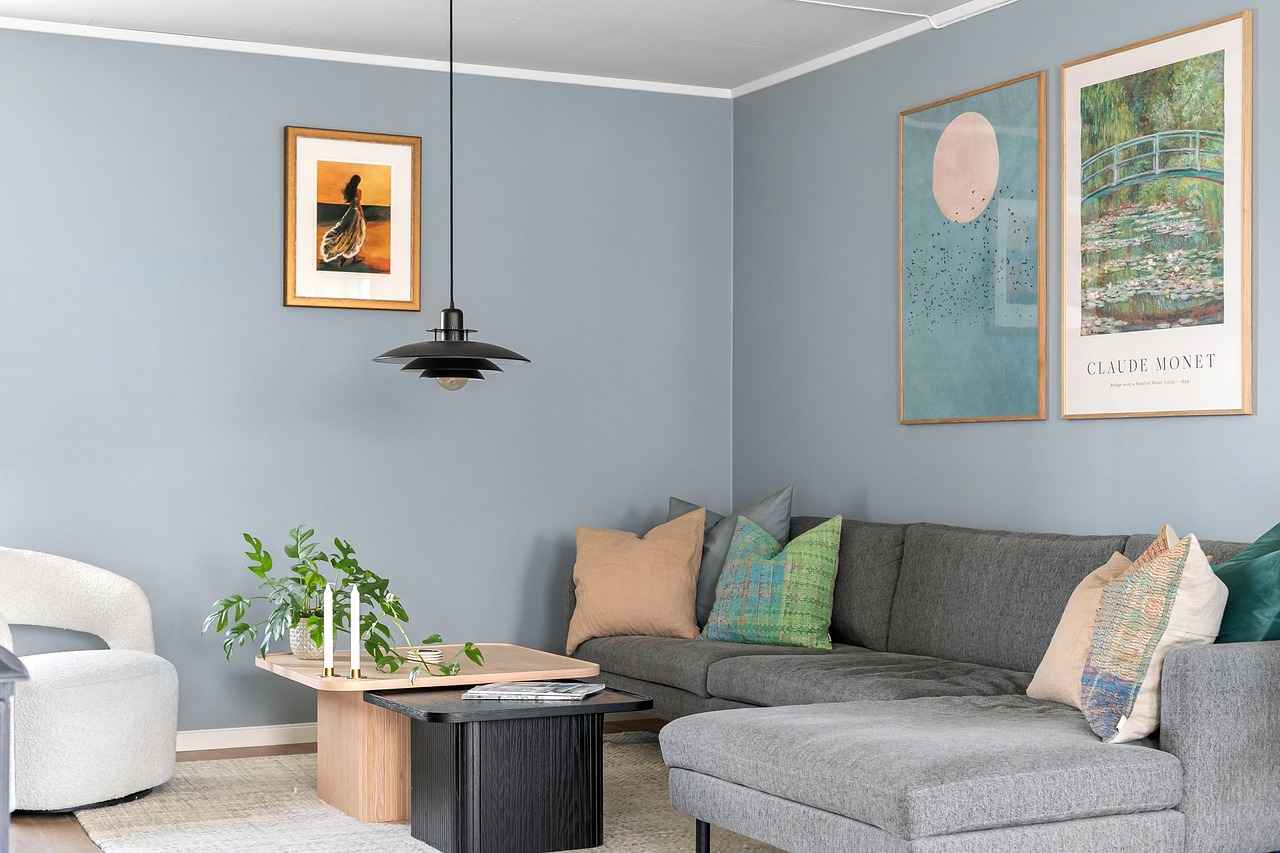
What Are Folding Screens?
Folding screens are versatile and functional pieces of furniture that can transform any living space. Typically constructed from materials such as wood, metal, or plastic, these screens consist of multiple panels that are hinged together, allowing them to be easily folded or unfolded. This design makes them not only practical but also aesthetically pleasing, often serving as decorative art pieces that enhance the overall ambiance of a room.
One of the primary advantages of folding screens is their portability. Unlike permanent room dividers, folding screens can be easily moved from one location to another, offering flexibility in how spaces are organized. This is particularly beneficial for renters or those who frequently rearrange their living areas. The ability to reposition a folding screen allows for quick adaptations to changing needs, whether it’s creating a cozy reading nook or a temporary privacy barrier during gatherings.
Folding screens also come in a variety of designs, from traditional to modern styles, allowing homeowners to choose options that best fit their decorative preferences. Many screens feature intricate patterns, beautiful artwork, or vibrant colors, making them a focal point in any room. This decorative aspect means that they can easily blend into or enhance existing interior design themes.
In addition to their aesthetic appeal, folding screens provide a practical solution for dividing spaces. They can create distinct zones within larger rooms, making them ideal for studio apartments or open-concept living areas. By simply positioning a folding screen, you can designate areas for different activities, such as work, relaxation, or entertainment.
Another significant benefit of folding screens is their ease of use. Setting them up requires no special tools or installation processes. You can simply unfold the screen and position it as desired. This simplicity is particularly appealing for those who prefer a hassle-free approach to home organization.
However, it’s important to consider the durability of folding screens. While many are made from sturdy materials, some may not withstand the test of time, especially if they are frequently moved or subjected to wear and tear. When selecting a folding screen, it’s advisable to look for high-quality materials that ensure longevity.
Furthermore, the maintenance of folding screens is relatively straightforward. Most can be wiped down with a damp cloth, and some materials may require occasional polishing to maintain their appearance. This low-maintenance aspect adds to their appeal, especially for busy individuals or families.
In summary, folding screens are a practical and stylish solution for dividing spaces within a home. Their portability, aesthetic versatility, and ease of use make them an attractive choice for many homeowners. Whether you need to create a temporary privacy space or simply wish to add a decorative element to your room, folding screens offer a unique combination of functionality and style.

Benefits of Room Divider Curtains
Room divider curtains are becoming increasingly popular among homeowners due to their versatility and affordability. These fabric panels provide a range of benefits that can significantly enhance the functionality and aesthetics of any space. Below, we explore some of the key advantages of using room divider curtains.
- Ease of Installation: One of the most appealing aspects of room divider curtains is their simple installation. Unlike more permanent solutions, such as walls or folding screens, curtains can be easily hung using a tension rod or curtain track. This means you can transform your space without the need for extensive renovations or professional help.
- Cost-Effectiveness: Room divider curtains are generally more affordable than other room division options. With a wide range of materials and designs available, you can find curtains that fit any budget. This makes them an excellent choice for homeowners looking to enhance their space without breaking the bank.
- Light Control: Another significant benefit of room divider curtains is their ability to control light levels in a room. Depending on the fabric you choose, you can allow soft light to filter through or completely block out sunlight for added privacy and comfort. This flexibility makes them ideal for spaces that require varying levels of illumination throughout the day.
- Privacy Enhancement: In open-concept homes, privacy can be a concern. Room divider curtains offer a simple solution by creating private areas within a larger space. Whether you need a quiet corner for work or a secluded area for relaxation, curtains can help you achieve the desired level of privacy without permanent alterations.
- Design Flexibility: Room divider curtains come in a vast array of colors, patterns, and fabrics, allowing for customization that suits your personal style. You can choose sheer materials for a light and airy feel or heavy drapes for a more dramatic look. This design flexibility enables you to enhance your home’s decor while effectively dividing spaces.
- Sound Absorption: Fabric curtains can help reduce noise levels in a room, making them an excellent choice for shared living spaces. By absorbing sound, they can create a more peaceful environment, which is particularly beneficial in homes with multiple occupants.
- Seasonal Adaptability: Room divider curtains can also be easily changed with the seasons. You can switch out heavier fabrics for lighter ones in warmer months, allowing for better airflow and a fresh look. This adaptability helps keep your space feeling current and comfortable throughout the year.
In summary, room divider curtains offer a multitude of benefits that make them a practical choice for homeowners looking to enhance their living spaces. With their easy installation, affordability, and design flexibility, they provide an effective solution for controlling light, privacy, and noise. Whether you want to create a cozy nook in a larger room or simply add a decorative touch to your home, room divider curtains can meet a variety of needs while complementing your interior design.
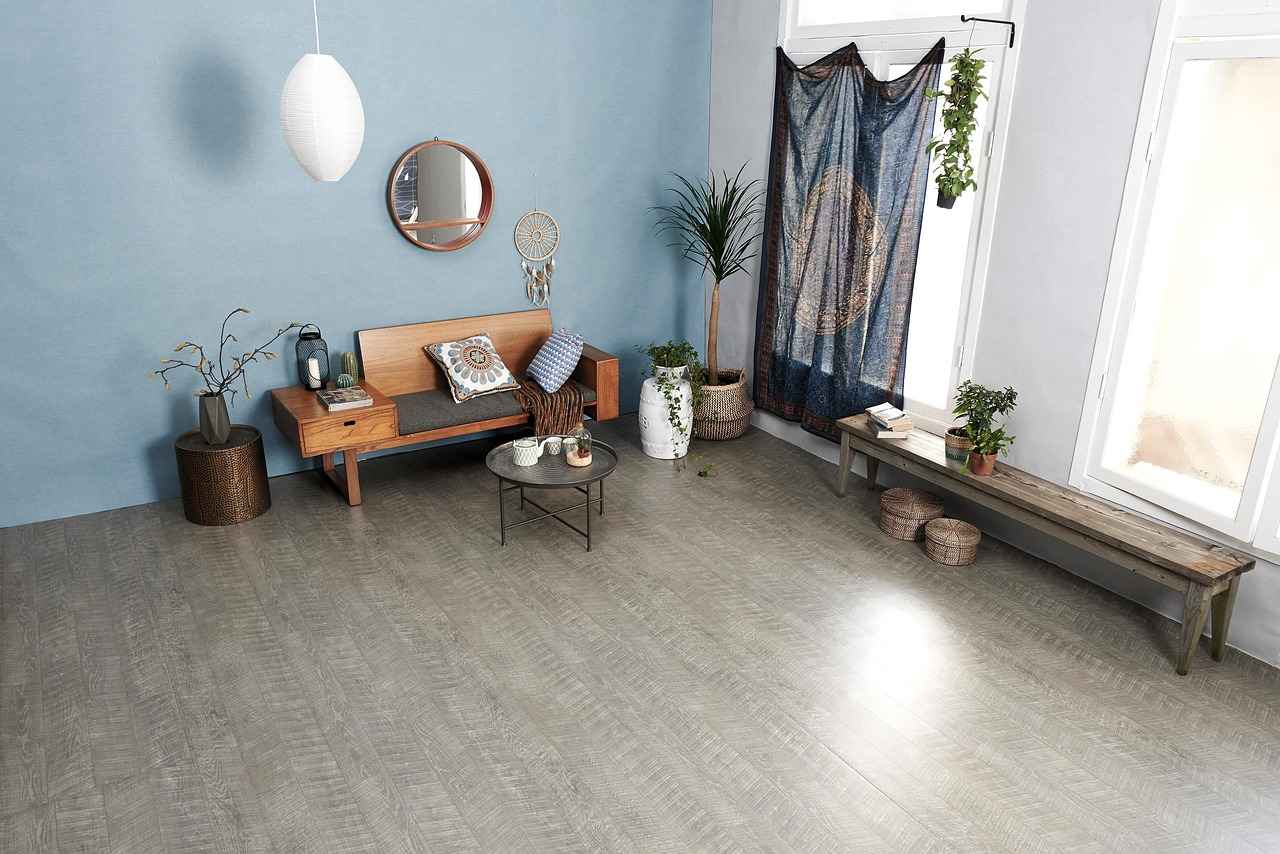
Benefits of Folding Screens
Folding screens have become increasingly popular in modern interior design, offering a myriad of benefits that cater to various needs and preferences. These versatile pieces not only serve functional purposes but also enhance the overall aesthetic of a space. Let’s delve deeper into the advantages of incorporating folding screens into your home.
Folding screens are not just ordinary room dividers; they are often crafted from materials such as wood, metal, or fabric, featuring intricate designs that can act as decorative elements in a room. Their ability to fold allows for easy storage and repositioning, making them an ideal choice for those who frequently change their living arrangements.
One of the most significant benefits of folding screens is their portability. Unlike permanent partitions, folding screens can be easily moved from one room to another or even taken outdoors for events. This flexibility is particularly advantageous for renters or individuals who like to frequently redecorate their spaces.
Folding screens come in various styles, colors, and patterns, allowing homeowners to choose pieces that complement their existing decor. Whether you prefer a traditional wooden screen or a modern, artistic design, these screens can serve as stunning focal points in any room, adding character and charm.
For those living in smaller spaces, folding screens provide an effective solution for creating distinct zones. Whether you want to separate a home office from a living area or establish a cozy reading nook, folding screens can achieve this without the need for permanent alterations to the room. This feature is particularly appealing for renters who may not be allowed to make structural changes.
Folding screens offer a level of privacy that can enhance the comfort of your living space. They can help block visual distractions and create a sense of seclusion, making them perfect for shared living situations. Additionally, some screens can provide sound dampening, contributing to a quieter environment.
Compared to other room division options, folding screens are often more affordable. They come in a range of price points, making it easier for individuals on a budget to find a stylish solution that meets their needs. This cost-effectiveness makes them an attractive option for those looking to enhance their living spaces without breaking the bank.
Maintaining folding screens is generally straightforward. Most screens require minimal upkeep, such as occasional dusting or wiping down with a damp cloth. This ease of care makes them a practical choice for busy individuals who want to keep their homes looking tidy without extensive cleaning routines.
The versatility of folding screens extends beyond mere room division. They can be used for various purposes, such as creating a backdrop for events, displaying art, or even serving as temporary storage solutions. This multifunctionality enhances their value in any home.
In conclusion, folding screens offer a unique blend of portability, aesthetic appeal, and functional benefits that make them a compelling choice for anyone looking to enhance their living space. Whether you’re a renter seeking flexibility or a homeowner wanting to add style, folding screens can be an excellent addition to your home decor.
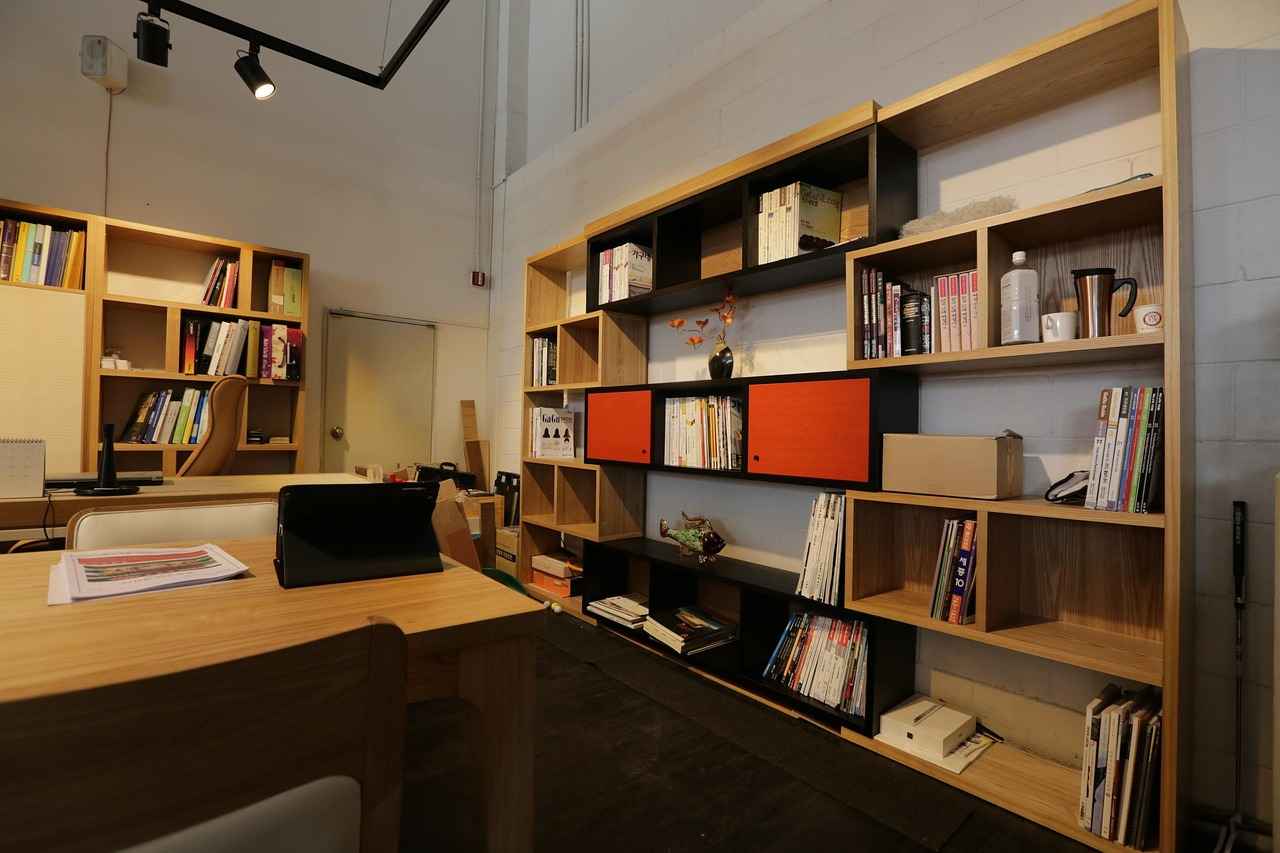
How to Choose Between Curtains and Screens?
When it comes to dividing spaces within your home or office, the choice between room divider curtains and folding screens can significantly impact both functionality and aesthetics. Understanding your specific requirements is crucial to making the right decision.
Privacy is often a primary concern when selecting a room divider. If you require a higher level of seclusion, room divider curtains may be the better option. They can be made from thicker fabrics that block visibility, allowing you to create a private area without compromising on style. On the other hand, folding screens can also provide privacy, but their effectiveness depends on the materials and design. For instance, a solid wood screen will offer more privacy than a lattice-style one.
Your personal style should influence your choice as well. Room divider curtains come in a myriad of colors, patterns, and textures, making them highly customizable to fit any interior design scheme. You can easily change them out with the seasons or as your tastes evolve. Conversely, folding screens are often more decorative and can serve as statement pieces, showcasing art or intricate designs that enhance the room’s character.
The intended use of the divided space is another critical factor. If you need flexibility, room divider curtains can be drawn back or closed depending on the situation, offering dynamic control over the space. This is particularly useful in multi-functional areas, such as a studio apartment or a home office that doubles as a guest room. Folding screens, while less flexible, can be easily relocated to suit different layouts or gatherings, making them ideal for temporary setups.
Cost is always a consideration. Generally, room divider curtains are more budget-friendly, especially if you opt for ready-made options. They also require less investment in hardware compared to the potential expense of high-quality folding screens. However, if you are looking for something unique or custom-made, the costs can rise significantly for both options. Always assess your budget against the long-term value each option provides.
The size and layout of your room will also dictate your choice. In larger spaces, room divider curtains can create a soft, flowing division that enhances the room’s ambiance. For smaller areas, folding screens can provide a more structured division without overwhelming the space. Consider how each option will affect the overall flow and functionality of the area.
Installation and upkeep can vary significantly. Room divider curtains typically require a curtain rod or track, which can be a straightforward DIY project. They are also generally machine-washable, making them easy to maintain. In contrast, folding screens may need occasional dusting and careful handling to avoid damage, particularly if they are made from delicate materials.
Ultimately, the decision between room divider curtains and folding screens should be based on a careful evaluation of your privacy needs, aesthetic preferences, intended use, budget, space considerations, and maintenance requirements. By assessing these factors, you can confidently choose the option that best suits your lifestyle and enhances your living or working environment.

Design Flexibility: Curtains vs. Screens
When it comes to interior design, the choice between room divider curtains and folding screens can significantly influence the aesthetic and functionality of your space. This section delves into the design flexibility offered by both options, highlighting how they cater to diverse tastes and needs.
Both room divider curtains and folding screens come in a wide range of designs and styles, but room divider curtains offer a greater variety in terms of fabric, color, and patterns. This versatility allows for enhanced customization in interior design, enabling homeowners to create a unique atmosphere that reflects their personal style.
- Fabric Choices: Curtains can be made from various materials such as cotton, linen, polyester, or silk, allowing you to choose based on texture, durability, and maintenance needs. For example, sheer fabrics can create a light and airy feel, while heavier fabrics can provide warmth and intimacy.
- Color Palette: The vast selection of colors available for curtains means you can easily coordinate with existing decor or make a bold statement. From neutral tones to vibrant hues, the right color can transform your space.
- Patterns and Prints: Curtains are available in countless patterns, from floral to geometric designs. This variety allows homeowners to express their personality and can even serve as a focal point in a room.
In contrast, folding screens are often more limited in terms of material and design. Typically crafted from wood, metal, or plastic, their aesthetic appeal largely depends on the craftsmanship and artistic elements incorporated into their design. While they can certainly enhance a room’s decor, they may not offer the same level of customization as curtains.
Another aspect to consider is the functionality of both options. Room divider curtains can easily be drawn open or closed, allowing for flexible space usage depending on your needs at any given moment. This adaptability is particularly beneficial in multi-functional spaces where the purpose may change throughout the day.
On the other hand, folding screens, while portable and easy to set up, are typically less versatile in terms of space management. They can create distinct areas, but their fixed nature means they may not be as practical for frequent changes in layout.
When considering the overall aesthetic of your space, it’s essential to think about how each option complements your existing decor. Curtains can enhance a cozy, inviting feel, while screens can add an element of sophistication or artistic flair, depending on their design.
Ultimately, the choice between room divider curtains and folding screens comes down to your specific needs and preferences. If you prioritize customization and versatility, curtains might be the better choice. However, if you prefer a more structured, decorative element that can be easily moved, folding screens may be the way to go.
In summary, while both room divider curtains and folding screens have their unique advantages, the design flexibility offered by curtains provides homeowners with a broader range of options to tailor their space according to personal taste and functional requirements. Whether you opt for the soft elegance of curtains or the artistic presence of screens, both can significantly enhance the overall ambiance of your home.

Installation and Maintenance: Which Is Easier?
When it comes to setting up your living space, the choice between room divider curtains and folding screens often hinges on installation and maintenance. Understanding how each option works can help you make an informed decision that suits your lifestyle and needs.
Installation and maintenance can vary significantly between the two options. Curtains typically require a rod, which can be mounted on walls or ceilings, making them relatively straightforward to install. The process usually involves measuring the space, securing the rod, and then hanging the curtains. This setup allows for easy adjustments, such as repositioning or changing the length of the curtains if needed. Additionally, many curtains are machine-washable, making them easy to clean and maintain. Regular washing can help keep them looking fresh and vibrant, and most fabrics can withstand repeated laundering.
On the other hand, folding screens offer a different kind of installation experience. They do not require any permanent fixtures, which makes them a great option for renters or those who prefer not to drill holes in their walls. However, they may need occasional dusting and careful handling, especially if they are made from delicate materials like paper or fabric. While they are generally portable and can be moved around easily, their setup can be a bit more cumbersome if you need to frequently rearrange your space.
Another aspect to consider is the durability of each option. Curtains, depending on the fabric, can wear out over time, especially if they are exposed to direct sunlight, which can cause fading. In contrast, folding screens, particularly those made from wood or metal, often have a longer lifespan due to their sturdier construction. However, they can be prone to scratches or dents if not handled carefully.
For those who prioritize versatility, curtains can be an excellent choice. They can be easily swapped out for different styles or colors, allowing you to refresh your space without a significant investment. In contrast, folding screens tend to be more permanent in style, and while they can serve as decorative pieces, they offer less flexibility in terms of changing the look of your room.
Ultimately, the choice between curtains and folding screens in terms of installation and maintenance will depend on your personal preferences and the specific needs of your space. If you value ease of installation and low maintenance, curtains may be the way to go. However, if you prefer a portable and stylish solution that doesn’t require permanent alterations, folding screens could be your best bet.
In summary, both options have their pros and cons regarding installation and maintenance. By assessing your requirements and lifestyle, you can choose the solution that best fits your needs.
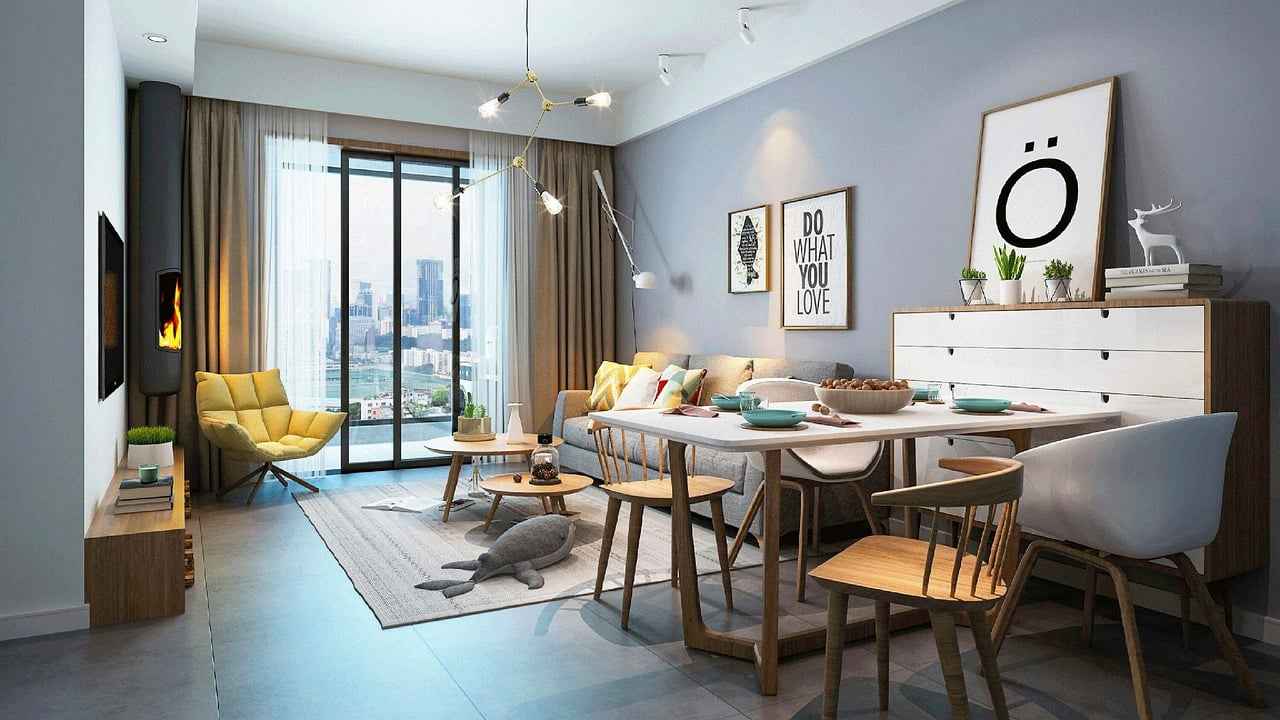
Cost Comparison: Curtains vs. Folding Screens
When it comes to home decor, the choice between room divider curtains and folding screens often boils down to budget considerations. Understanding the cost implications of each option is crucial for making an informed decision that aligns with your financial situation and aesthetic preferences.
Room divider curtains are generally considered a more affordable option compared to folding screens. The price of curtains can range significantly based on factors such as material quality, design complexity, and brand. For instance, basic cotton or polyester curtains can be found at relatively low prices, while high-end options made from luxurious fabrics like silk can be considerably more expensive.
On the other hand, folding screens tend to have a higher upfront cost, primarily due to the materials used in their construction. Typically made from wood, metal, or high-quality plastic, these screens often feature intricate designs and craftsmanship that can drive up their price. While you may find budget-friendly options, the average cost of a durable folding screen can easily exceed that of a standard set of curtains.
It’s essential to consider the long-term value of each option as well. While curtains may be less expensive initially, they might require replacement sooner than folding screens, depending on usage and maintenance. For example, curtains can fade or wear out with time, particularly if they are frequently opened and closed. In contrast, folding screens, with their sturdier materials, tend to offer greater durability and longevity, potentially making them a better investment over time.
Another factor to consider is the installation cost. Room divider curtains typically require minimal setup, often just a curtain rod and brackets, which can be installed easily by most homeowners. This simplicity can save you additional expenses associated with hiring professionals. Conversely, folding screens are usually ready to use right out of the box, but their weight and bulk may necessitate careful handling and placement, especially in smaller spaces.
In terms of maintenance, curtains can often be machine-washed, which adds to their convenience and affordability over time. This ease of cleaning can significantly reduce long-term costs associated with upkeep. Folding screens, while visually appealing, may require more delicate care, such as dusting and avoiding exposure to moisture, which could lead to additional costs if damage occurs.
Ultimately, the choice between room divider curtains and folding screens will depend on your specific needs and budget. If you’re looking for a cost-effective solution that offers flexibility and easy maintenance, curtains may be the way to go. However, if you prioritize aesthetics and durability and are willing to invest more upfront, folding screens could be the better choice.
In conclusion, while room divider curtains typically present a more budget-friendly option, it’s vital to consider all aspects, including durability, maintenance, and installation costs. By evaluating these factors, you can make an informed decision that best suits your lifestyle and enhances your living space.

Space Considerations: Which Works Best?
When it comes to designing your living space, the size and layout of the area are crucial factors that can significantly influence your choice of room dividers. Understanding the unique characteristics of room divider curtains and folding screens can help you make an informed decision that best suits your needs.
The dimensions of your room play a vital role in determining the most effective room divider. For instance, in larger areas, room divider curtains can be a perfect solution. These curtains can be drawn open or closed depending on the need for privacy or openness, allowing for a flexible division of space. They can create cozy nooks or separate functional areas, such as a home office from a living room. Moreover, curtains can enhance the aesthetic appeal of the room while providing sound absorption and light control.
On the other hand, folding screens are typically better suited for smaller spaces. Their compact design makes them easy to move and reconfigure, allowing you to create temporary divisions without permanently altering the room’s layout. This is especially beneficial in apartments or studios where space is at a premium. Folding screens can also serve a dual purpose as decorative elements, adding character and style to your interior.
- Room Divider Curtains: Ideal for large living rooms, open-plan areas, or spaces requiring frequent reconfiguration.
- Folding Screens: Perfect for bedrooms, small studios, or temporary setups for events and gatherings.
Both options come in a variety of designs, colors, and materials, which can enhance the overall aesthetic of your space. Room divider curtains offer a wide range of fabric choices, from sheer to blackout, allowing you to customize the look and feel of your room. You can select patterns or colors that complement your existing decor, making them a versatile choice.
Meanwhile, folding screens can be crafted from various materials such as wood, metal, or fabric, and often feature intricate designs or artwork. This makes them not just a functional item but also a statement piece that can define the style of your space.
When deciding between curtains and screens, consider the following:
- Room Size: Larger rooms benefit from curtains that can be adjusted to create different atmospheres, while smaller rooms may feel cramped with bulky screens.
- Functionality: Think about how often you need to change the layout. Curtains allow for more dynamic use of space, while screens provide quick, temporary solutions.
- Privacy Needs: Evaluate how much privacy you require. Curtains can be drawn closed for complete seclusion, whereas screens offer a more casual division.
In terms of maintenance, room divider curtains are generally easier to care for, as they can often be machine washed. Installation typically involves hanging a rod, which can be a simple DIY task. Conversely, folding screens require minimal setup but may need occasional dusting to maintain their appearance.
Ultimately, the choice between room divider curtains and folding screens should be guided by your specific space considerations, personal preferences, and practical needs. By assessing the size and layout of your area, you can select the most suitable option that enhances your living environment.
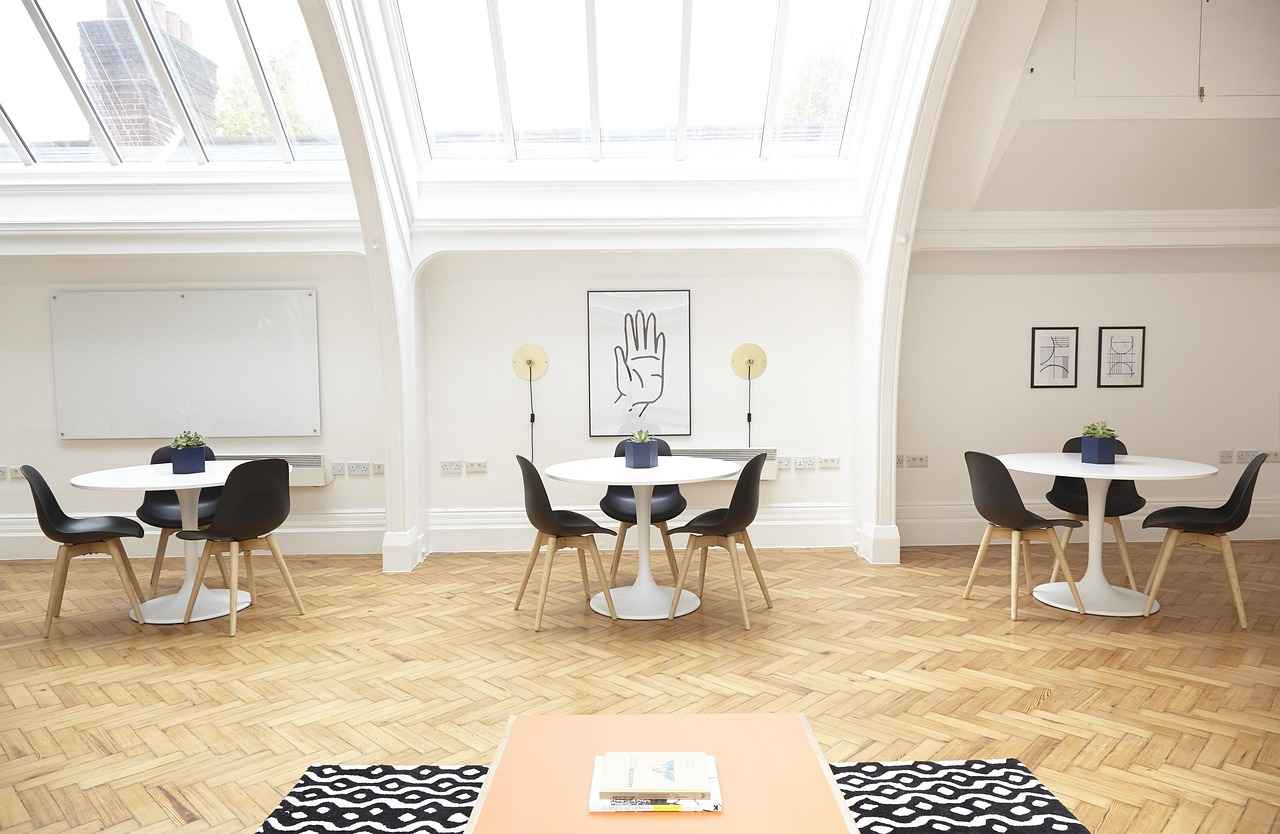
Privacy Levels: Curtains vs. Screens
When it comes to creating private spaces within your home or office, privacy is a crucial factor to consider. The choice between room divider curtains and folding screens can significantly impact the level of privacy you achieve. Each option offers unique features that cater to different privacy needs, and understanding these can help you make an informed decision.
Room divider curtains are designed to be hung from a rod or track, allowing them to be drawn open or closed as needed. The degree of privacy they offer largely depends on the fabric used. For instance:
- Sheer fabrics provide minimal privacy, allowing light to filter through while still offering a glimpse of the space beyond.
- Lightweight fabrics offer moderate privacy, obscuring the view but not completely blocking light.
- Heavy drapes or blackout materials provide maximum privacy, effectively blocking visibility from outside.
This versatility makes curtains a popular choice for those who want to adjust their privacy levels based on the time of day or activity.
Folding screens, on the other hand, are typically constructed from solid materials such as wood or metal, which can create immediate visual barriers. Their design often includes multiple panels that can be arranged in various configurations, allowing for flexible space division. Here are some key points regarding their privacy benefits:
- Instant Division: Folding screens can be set up quickly to create a private area, making them ideal for temporary needs.
- Solid Barriers: Unlike curtains, screens provide a solid barrier that completely obstructs the view, ensuring enhanced privacy.
- Decorative Elements: Many folding screens are designed with artistic patterns or colors, adding aesthetic value while serving a functional purpose.
The decision between room divider curtains and folding screens for privacy ultimately depends on your specific needs. If you require flexibility and the ability to adjust your privacy throughout the day, curtains may be the better choice. Conversely, if you need a permanent solution that guarantees complete privacy, folding screens may be more suitable.
When evaluating privacy options, consider the layout of your space and how you intend to use it. For larger areas or open floor plans, curtains can effectively segment space while allowing you to control light and privacy. In contrast, folding screens work well in smaller rooms where a quick, adjustable solution is necessary.
In conclusion, both room divider curtains and folding screens offer distinct advantages when it comes to privacy. By assessing your needs, lifestyle, and the specific characteristics of your space, you can choose the option that best enhances your living or working environment. Remember, the right choice will not only provide the privacy you seek but also contribute to the overall aesthetic of your space.
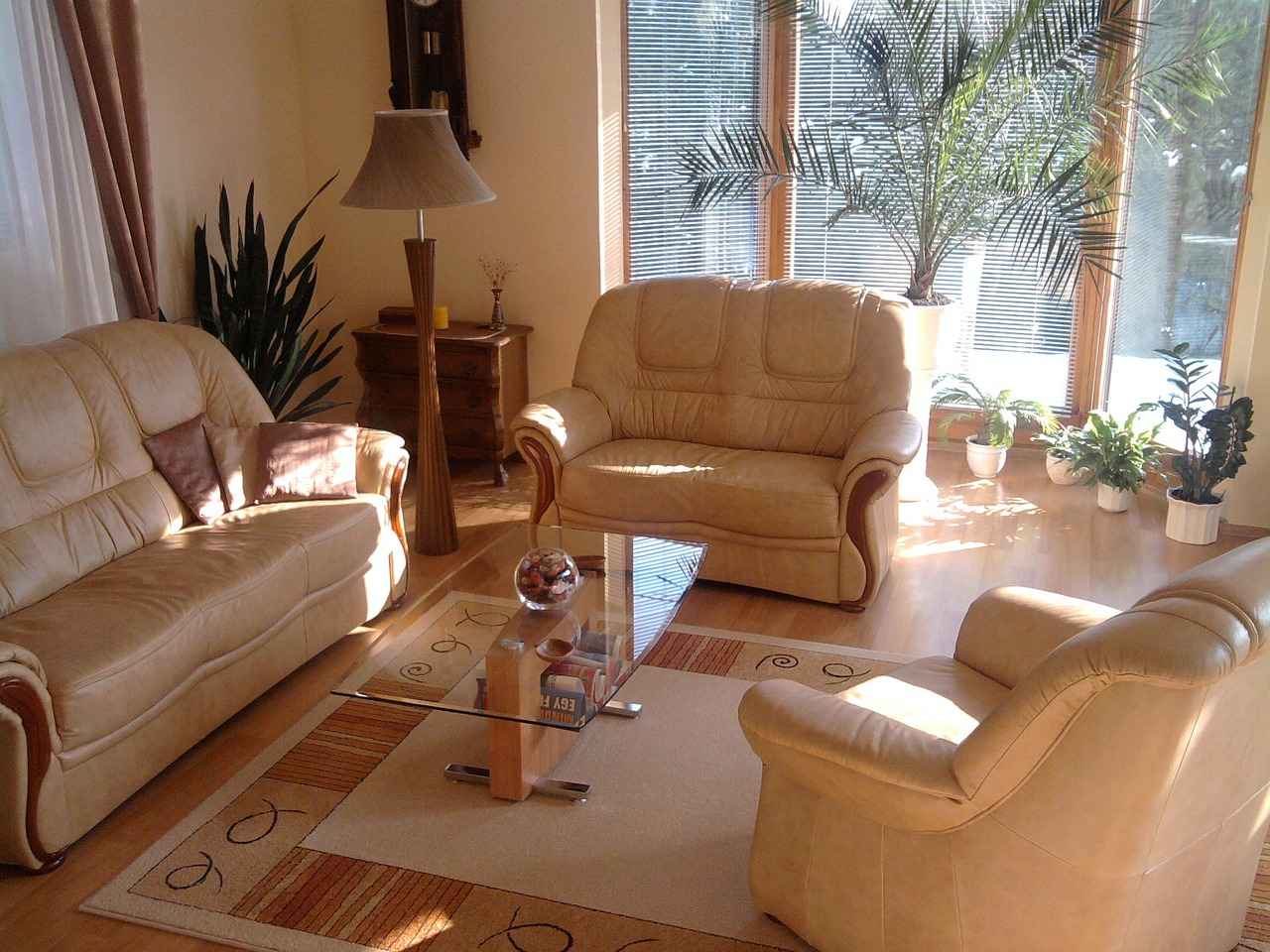
Durability and Longevity: Which Lasts Longer?
When it comes to selecting room dividers, durability and longevity are crucial factors that can significantly impact your decision. Understanding how folding screens and room divider curtains compare in terms of durability is essential for making an informed choice that suits your lifestyle and needs.
The durability of room dividers can vary widely, particularly between folding screens and curtains. Generally, folding screens tend to offer greater longevity due to their construction materials. Most screens are made from sturdy materials like wood, metal, or high-quality plastic, which can withstand wear and tear over time. This makes them an ideal choice for high-traffic areas or settings where they may be frequently moved or adjusted.
On the other hand, room divider curtains are typically made from various fabrics, which can influence their lifespan. The type of fabric used plays a significant role in how well curtains can endure daily use. For example, heavy-duty fabrics like canvas or polyester are more resilient compared to lighter materials like sheer or cotton. Depending on the fabric type and usage, curtains may wear out faster, especially if they are exposed to direct sunlight, which can lead to fading and degradation.
Moreover, the usage patterns of each option can impact their durability. Curtains that are frequently opened and closed may experience more stress at the seams and grommets, leading to potential damage over time. In contrast, folding screens, while also subject to movement, are generally more robust and can handle repositioning without significant wear.
Another consideration is the maintenance required for each option. Curtains are often machine washable, making them easier to care for and maintain their appearance. However, this convenience does not always translate to longevity, as repeated washing can cause fabric wear. In contrast, folding screens may require less frequent cleaning but can accumulate dust and grime over time, necessitating careful handling during cleaning.
In terms of cost-effectiveness, investing in a high-quality folding screen might be more prudent in the long run if durability is your primary concern. While the initial purchase price may be higher than that of curtains, the longevity and reduced need for replacement can balance out the costs over time.
Ultimately, when deciding between folding screens and room divider curtains, consider your environment and how you plan to use them. If you prioritize durability and long-term investment, folding screens are likely the better choice. However, if you value flexibility and ease of maintenance, curtains might still serve your needs effectively.
In conclusion, both options have their unique advantages and drawbacks regarding durability. Assessing your specific requirements and how each option fits into your lifestyle will help you make the best choice for your space.

Conclusion: Making Your Choice
When considering the best way to divide a space, one may find themselves torn between room divider curtains and folding screens. Each option has its unique advantages and disadvantages, making the decision highly dependent on your specific needs and preferences. This article delves into various factors that can influence your choice, helping you make an informed decision tailored to your environment.
The first step in your decision-making process is to evaluate your space requirements. Are you looking to create a temporary division in a small apartment, or do you need a more permanent solution for a larger area? Room divider curtains are excellent for larger spaces, allowing for flexible layouts, while folding screens excel in smaller areas where portability and easy setup are essential.
Both options bring unique aesthetic qualities to a room. Room divider curtains come in an array of fabrics, colors, and patterns, allowing for extensive customization. On the other hand, folding screens often serve as decorative art pieces, adding a touch of sophistication to any space. Consider your design preferences and how each option aligns with your existing decor.
Ease of installation and maintenance can significantly influence your choice. Room divider curtains typically require a simple rod installation and can be machine-washed, making them low-maintenance. In contrast, folding screens may need more careful handling and occasional dusting to keep them looking pristine. Assess your willingness to commit time and effort to maintain your chosen option.
Cost is another crucial consideration. Generally, room divider curtains are more affordable than folding screens, but prices can vary widely based on material quality and design complexity. Set a budget and explore options within that range to ensure you make a financially sound decision.
Privacy is a key factor when choosing between these two options. Room divider curtains can offer varying degrees of privacy depending on fabric thickness and opacity, while folding screens provide immediate visual barriers. Determine how much privacy you require in the divided space and choose accordingly.
Durability and longevity are essential for any investment in home decor. Folding screens tend to be sturdier and can last longer, while room divider curtains may wear out faster, especially if frequently opened and closed. Consider the expected wear and tear based on your lifestyle and choose the option that best fits your needs.
Ultimately, the choice between room divider curtains and folding screens hinges on your unique requirements, aesthetic preferences, and the specific context of your space. By evaluating the factors discussed above—such as space requirements, aesthetic appeal, installation and maintenance, cost, privacy levels, and durability—you can make a well-informed decision that enhances both the functionality and beauty of your environment.
Frequently Asked Questions
- What are the main differences between room divider curtains and folding screens?
Room divider curtains are fabric panels that can be hung to create flexible spaces, while folding screens are made of multiple rigid panels that offer a more permanent division. Curtains provide more design options, while screens can serve as decorative art pieces.
- Which option is more cost-effective?
Generally, room divider curtains are more affordable than folding screens. However, prices can vary based on material quality and design complexity, so it’s essential to consider your budget and preferences.
- How do I maintain room divider curtains compared to folding screens?
Curtains are typically machine-washable and easy to care for, while folding screens may require occasional dusting and careful handling to maintain their appearance. Consider your lifestyle when choosing between the two.
- Can I achieve the same level of privacy with both options?
While both options can provide privacy, the effectiveness varies. Curtains can offer different privacy levels based on fabric choice, whereas folding screens create immediate visual barriers. Choose based on your specific needs.
- Which is better for small spaces?
Folding screens are often better suited for small spaces as they can be easily moved and don’t require installation. However, if you need a more flexible solution, curtains can also work well when hung in a way that maximizes space.
